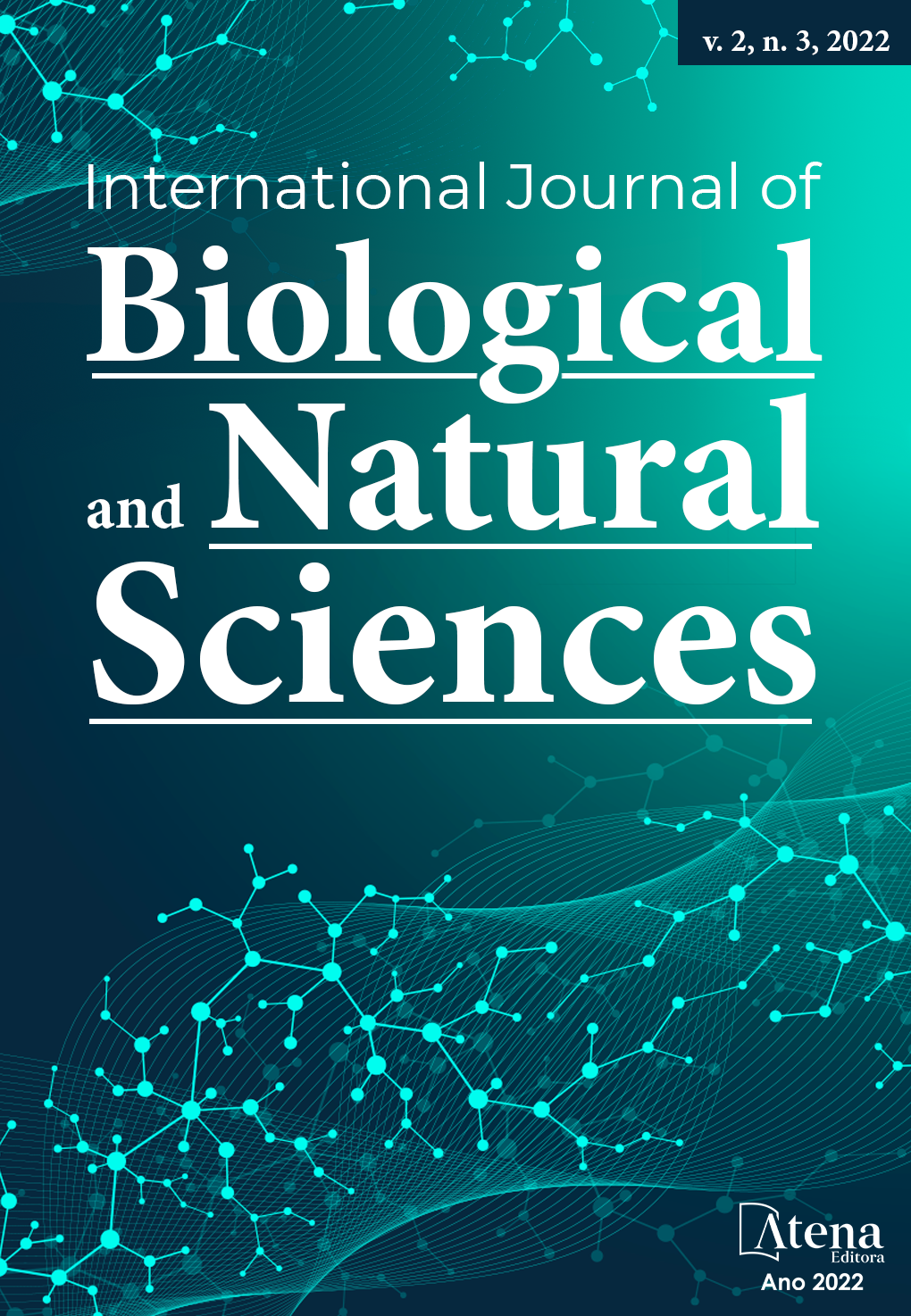
INFLUENCE OF THE ESSENCIAL OILS OF Origanum majorana AND Copaifera officinalis IN COMPARISON TO FORMULATED PRODUCTS ON ADULT GONADS OF Neoleucinodes elegantalis (GUENÉE) (LEPIDOPTERA: CRAMBIDAE)
Neoleucinodes elegantalis is one of the key pests of the tomato crop, responsible for causing large losses in the production. Therefore, control measures with new modes of action or target sites have been investigated, such as the use of essential oils. Thus, the present study evaluated the effects of the essential oils of Copaifera officinalis L. and Origanum majorana L. on the histology and histochemistry of N. elegantalis gonads, based on the analysis of morphology, carbohydrates and proteins, compared to commercial formulated products. The essential oils were analyzed by gas chromatography (GC-MS). To carry out the bioassays after emergence, 48h old adults were sprayed with sublethal concentrations of 666.34 and 528.37 mg/L, of C. officinalis and O. majorana oils, respectively. The formulated insecticides, Decis® and Azamax®, in turn, were used in their respective indicated concentrations. After 48h, the testicles and ovarioles were collected for analysis. As a result, it was observed yolk reduction and changes in the concentration of carbohydrates and proteins in the gonads of N. elegantalis, and among all treatments O. majorana caused greater damage to the gametogenesis. Regarding gas chromatography, E-Caryophyllene and Terpinene were the major components of the essential oils.
INFLUENCE OF THE ESSENCIAL OILS OF Origanum majorana AND Copaifera officinalis IN COMPARISON TO FORMULATED PRODUCTS ON ADULT GONADS OF Neoleucinodes elegantalis (GUENÉE) (LEPIDOPTERA: CRAMBIDAE)
-
DOI: 10.22533/at.ed.813232228041
-
Palavras-chave: E-Caryophyllene, Terpinene, bioactive, histophysiology, tomato fruit borer, gametogenesis.
-
Keywords: E-Caryophyllene, Terpinene, bioactive, histophysiology, tomato fruit borer, gametogenesis.
-
Abstract:
Neoleucinodes elegantalis is one of the key pests of the tomato crop, responsible for causing large losses in the production. Therefore, control measures with new modes of action or target sites have been investigated, such as the use of essential oils. Thus, the present study evaluated the effects of the essential oils of Copaifera officinalis L. and Origanum majorana L. on the histology and histochemistry of N. elegantalis gonads, based on the analysis of morphology, carbohydrates and proteins, compared to commercial formulated products. The essential oils were analyzed by gas chromatography (GC-MS). To carry out the bioassays after emergence, 48h old adults were sprayed with sublethal concentrations of 666.34 and 528.37 mg/L, of C. officinalis and O. majorana oils, respectively. The formulated insecticides, Decis® and Azamax®, in turn, were used in their respective indicated concentrations. After 48h, the testicles and ovarioles were collected for analysis. As a result, it was observed yolk reduction and changes in the concentration of carbohydrates and proteins in the gonads of N. elegantalis, and among all treatments O. majorana caused greater damage to the gametogenesis. Regarding gas chromatography, E-Caryophyllene and Terpinene were the major components of the essential oils.
-
Número de páginas: 29
- Carolina Arruda Guedes
- Álvaro Aguiar Coelho Teixeira
- Thiago José de Souza Alves
- Dayvson De Santana Cavalcanti
- Valeska Andrea Atico Braga
- Daniela Maria do Amaral Ferraz Navarro
- Kamilla Andrade Dutra
- Maria Clara Nobrega Ferreira
- Milena Larissa Gonçalves Santana
- Glaucilane dos santos cruz
- Valéria Wanderley Teixeira
- Camila Santos Teixeira


